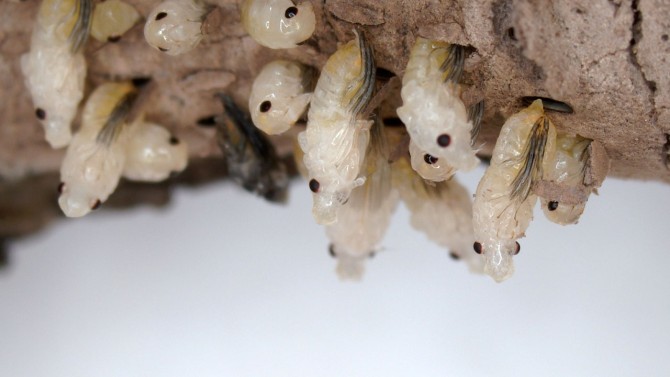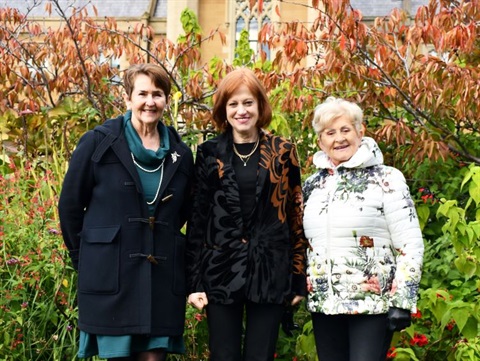First discovered in Pennsylvania in 2014, the invasive spotted lanternfly has steadily spread north. Now, Cornell researchers are helping fruit growers fight the invasion on the front lines in the Hudson Valley.
Researchers at the Hudson Valley Research Laboratory (HVRL), which is part of Cornell AgriTech, are working to identify effective strategies to fight the spotted lanternfly that the region’s growers can use in their orchards and vineyards.
Spotted lanternfly nymphs emerge from eggs masses from May through June in the Hudson Valley.
The insect is now in the Hudson Valley “in high numbers,” according to C. Andres Antolinez, an entomologist and senior research associate for the HVRL.
“This insect is easy to kill. The problem is the huge population number,” he said. “They are very difficult to control because you can spray but they are going to keep colonizing and colonizing the crop.”
Antolinez and the region’s growers have spent the winter and spring hunting for – and finding – spotted lanternfly eggs overwintering throughout the area.
The insect is a prodigious breeder, and even nymphs move from tree to tree. It can lay its eggs on any surface, including campfire wood and even vehicles, hitchhiking to new territories. Pockets of infestation have been reported elsewhere in New York and as far west as Illinois.
Spotted lanternfly pose a threat to the grape industry, potentially causing significant economic damage. The insects will feed on vines and weaken them by using their needle-like mouths to pierce the plant and suck its sap. They also secrete a sticky substance known as honeydew, which serves as a substrate for mold that covers leaves and reduces photosynthesis.
To help learn more about the lanternfly and its spread, HVRL is placing monitoring stations throughout the region, including on local farms. And Antolinez is establishing a colony of spotted lanternfly in laboratory conditions to observe how factors like temperature and humidity affect their development. “Understanding that information, we will know how the insects develop in the field,” he said, “and maybe we can develop strategies in order to control populations.”
If a proposal currently being reviewed by the USDA is approved, Antolinez and a team of collaborators from multiple universities will test different approaches to control spotted lanternfly such as the use of attract and kill stations at the borders of an area to keep the insects from moving into the interior, or the use of trees that attract the insect, known as trap trees.
Local growers are eager to learn from the HVRL research.
Peggy Kent has been administrative assistant at the lab since 2019, but her family has been farming in the Hudson Valley for seven generations. They own Locust Grove Fruit Farm in Milton, New York, and have found the spotted lanternfly on their property.
“It is an expensive area to live in,” she said. “There’s been a lot of pressure to sell your property or develop your property. To keep it farming, you need to be competitive, so you need to have the best research available and to make smart decisions because there’s very little margin for error.”
The lab can be more aggressive with these strategies than a risk-averse farmer. “We can try new things,” she said. “We can build up disease pressure in an orchard and then look at ways to bring it back and to manage it, while my husband (at Locust Grove) would be more proactive in keeping it at bay. So, can you skip this spray? Or can you skip this treatment? Does it work? Is it worth the farmer not spending that money or time? Those are the things that we prove here.”









